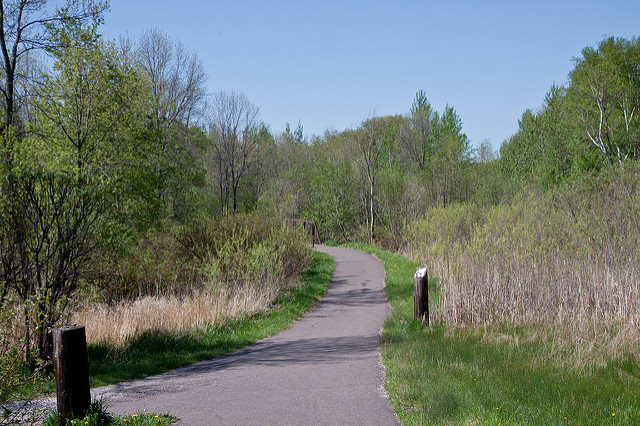77. Support your favorite birding spots.

When I was a little girl, I used to play on property that belonged to Automatic Electric, a huge industrial complex with a tree-lined creek on its extensive grounds. My family had frequent picnics in Chicago forest preserves, where I would take little hikes by myself while everyone else socialized. It never occurred to me that any of my favorite haunts would remain while only as long as their private owners of (in the case of the forest preserves) their public managing agencies and the Chicago taxpayers who funded them chose to let them remain that way. Even when I played in my backyard, I could see that none of the birds I enjoyed—not the robins or cardinals or colorful little songbirds passing through—lived entirely in my backyard. As far as enjoying the out-of-doors, we’re all dependent on the kindness and funding of strangers. All wild habitat “belongs” to someone or something, either public or private. And whether land is under the control of an individual, a corporation, a conservation organization, or a public agency, decisions regarding its management can be made very quickly, flattening even the most pristine, critical habitat into a discount department store parking lot in short order. We can exert public pressure on governmental agencies to protect public lands or to enforce environmental regulations on private lands, but those agencies are pressured by other interests as well. How can we ensure that there will continue to be wild spaces for our children and future generations, much less for birds and wildlife?
We can make the greatest impact by taking a personal interest in, and responsibility for, the places we know and love best. Belonging to or even starting a “Friends of” organization to support nearby national wildlife refuges, parks, and other public lands is one way. Letting managers and landowners know how much we value a spot and appreciate its quality habitat is also important. Paying entrance and parking fees to parks and private birding spots should go without saying, but some people, even prominent, well-to-do birders, sometimes try to dodge this fundamental duty.
When we’re conscious of who or what entity is in charge of managing the land at our favorite birding destinations and show our support with both membership and entrance fees and additional contributions, we can make a huge difference in ensuring that wild habitat stays that way.
From 101 Ways to Help Birds, published by Stackpole in 2006. Please consider buying the book to show that there is a market for bird conservation books. (Photos, links, and updated information at the end of some entries are not from the book.)